Limu Omani – How to make dried limes
Dried lime, Limu Omani/Omani lemon is also known as black lime, Loomi, or Noomi Basra. Dried lime has a pleasant sour taste and is very appetizing. It is used in many foods and is rich in vitamins C and D.
When Limes completely lose their water and become dehydrated, they gain a unique and different taste and aroma. This taste of dried lime gives a pleasant sourness to the food. Using it as a spice in Iranian, Omani and Gulf states’ cuisine is very common. In Iran, dried lime is used in cooking chicken, Ghormeh Sabzi, and various stews.
The Limu Omani made in Iran is usually made from drying Shirazi sour lemon or Citrus aurantifolia.

Limu Omani’s skin is usually light brown to black, which also depends on the drying method.
Making limoo Amani at home is very easy and enjoyable, it just needs a bit of patience. The drying method we will mention in this post is totally healthy and does not need any chemical substances, you only need some lime, salt, vinegar, and water.
In which foods is limu omani used?
Dried lime can be used in many foods and is added to them either as a whole or ground. It can be used in any food as spice or seasoning but using it in the following foods will give your dish a wonderful taste:
- Seasoning in stews like Khoresh Gheymeh, Khoresh Ghormeh Sabzi, and eggplant stew
- Abgoosht seasoning (Beef Stew From Beef Bone Broth Recipe)
- Red Lentil Dal
- Marinating and boiling chicken
- Seasoning for grilled meat
- Soup
- Lime tea
- Herbal tea
Methods of drying lime
There are plenty of methods for drying limes and dehydrating them, examples follow as:
- Sun (Sun-dried lime)
- Oven
- Heater or Radiator
- Fruit drying machine
Limu Omani that is dried under the sun is brown. The ones dried in the oven are darker or even black.
How long does the complete drying process of Limu Amani take?
Drying up under the sun takes around 3-4 weeks. In the oven or on the heater and radiator, it takes less time.
If the insides of the limes aren’t fully dried and you put them in a closed container, the insides will become moldy, and your hard work will go to waste.
What limes are suitable for making Limu Omani?
It’s better to choose high-quality limes for this. It’d be good if your chosen limes possess these qualities:
- Unharmed skin
- Not mushy and with good quality
- Limes with thin and yellow skin are the best choices for making Limu Omani. The ones with thick skin are the second priority.
Substitute for loomi and black lime powder:
In case you need loomi or lime powder but don’t have access to them, anything that is sour can be a substitute. The following suggestions can be suitable substitutes for dried Persian lime:
- Fresh lime
- Lime juice
- Pomegranate Paste in Ghormeh Sabzi stew
- Dried Plum in Gheymeh stew
- Plum sauce in Ghalieh Mahi (similar to pomegranate paste but thicker)
- Tamarind in Red Lentil Dal
- Vinegar instead of lime powder in salad sauce
- Sour grape juice or Ab Ghooreh
- Sumac
And a golden piece of advice: when you use fresh limes next to your food and they’re no longer juicy, you can put the skins in a basket to dry. It’s economical and can be a substitute for Omani lime.
How to make Persian lime powder?
You can chop the Limu Omanis after they’re prepared and grind them. Just remember to extract the seeds because they’ll make the lime powder bitter.
Limu Omani storage and how long its shelf life is:
Since Limu Omani is dried, its shelf life is pretty long, and it can be used for up to 2 years. Limu Omani powder can be used up until a year since it’s dry and has no moisture.
After this period of time, it might lose its initial taste and aroma.
Store them in a place with these traits:
- A dry and cool place
- Away from moisture and humidity
- Away from direct sunlight
Omani lime and lime powder should be kept in a sealed container. However, you can also keep Limu Omani in a closed piece of fabric.
How to make dried limes (Persian Limu Omani)
Materials
- 4 kg Limes
- ½ cup Vinegar
- 1 cup Salt
Instructions
- Thoroughly wash the fresh limes.
- Add salt to the limes; sprinkle salt all over the limes and let them sit for one day so that the salt is absorbed by the limes. With this, the limes will become savory and taste better, the bitterness of their skin will decrease too. For 4 kilograms of lime, add one cup of salt.
- After one day, wash the salt off the limes.
- Put the limes in boiled water and vinegar; put a pot of water on the stove and let it boil, then add the vinegar to it. Add the limes and let them sit for 1 minute in the water. Then, drain the limes and pour cold water on them to stop the cooking process. Be careful not to leave the limes in boiling water for more than 1 minute. We don’t want the limes to cook or change color; this step is for softening their skin so that they dry easier. If you cook them for more than 1 minute, the skin will become too soft, and the limes become mushy. In the end, after drying up, the Limu Omanis will be wrinkly and dark.
- With a toothpick, make holes in the limes; with a toothpick or the tip of a knife, create 1 or 2 small holes in each lime. This will help the air enter the limes, prevent rotting, and hasten the drying process.
- Put the limes under the sun for drying; put the limes on a tray, on a dark piece of fabric, or in a basket. It’s better if you put the limes in a basket to allow better airflow, both from above and under, to prevent rotting. After about 1 week, the limes will look like this. Their color will slowly change, and they’ll dry up. Your Limu Omanis are becoming prepared. limoo Amani dries up better and faster under sunlight, but you can put them outside the house for the first 10 days and then bring them in, put them in a basket or on a tray and leave them to completely dry up. Put them in a stable place where they don’t interfere with your work and leave them to their own to dry up naturally. After 2-3 weeks, the Limu Omanis will be like the picture below. As you can see, they’re wrinkling and drying.
Notes
Drying lime in the oven
Like the previous method, wash the limes and add salt to them. Put them in boiling water and vinegar. Poke them with a toothpick. Then, put the limes in an oven tray. Turn on the oven and set it at the lowest possible temperature, like 110°C. Leave the oven’s door half-open and put the tray inside. Pay attention so that the temperature isn’t too high; it should be like the sun shining on a metal object. You should be able to touch the tray and pull it out without needing a glove. If the temperature is too high, the limes become bitter and burn. Flip them over a few times a day. Leave the limes like this for 10-15 days until their insides are all dried up. During this time, if you want to use the oven, take the limes out of the oven for a few hours a day and then put them back in.Drying limes on a heater or radiator
In this method too, wash the limes and add salt to them. Put them in boiling water and vinegar. Make small holes in them with a toothpick. Put the limes on a metal tray and put them on a heater or radiator. The heat must be pretty low. Turn them over a few times every day. If the tray receives too much heat, the limes will get cooked, and the Limu Omanis will become wrinkly. If the heat is too high, instead of putting the tray on the heater, place it next to it. During the first days when the limes have a lot of water, beware of rotting. After they dry a bit, you can move them to a basket and leave them inside the house. Being exposed to air helps with the drying process, and they don’t need to be on the heater 24 hours a day. In this method, it’ll also take 15-20 days for the Limu Omanis to be prepared.Conclusion:
In this post, I talked about my experience with the easiest methods of making Limu Omani, in which there is no need for any specialized devices like fruit dryers, etc.
Amani lemon or Persian dried lemon is a perfect spice and seasoning for foods and is hard to find in some parts of the world. If you live in those areas, you better get started and make this beneficial and delicious seasoning yourself!
Making a healthy foodstuff at home, without chemical substances, is an appealing experience. If you enjoy making Iranian foods, you will definitely need Limu Omani plenty of times!
Make sure to try it and experience the great feeling of making a healthy chow at home which I experienced myself! I believe that just like me, you will feel great joy and satisfaction from making these glamorous Limu Omanis.
If you’re planning on doing this and have any specific questions, discuss them with me in the comments.

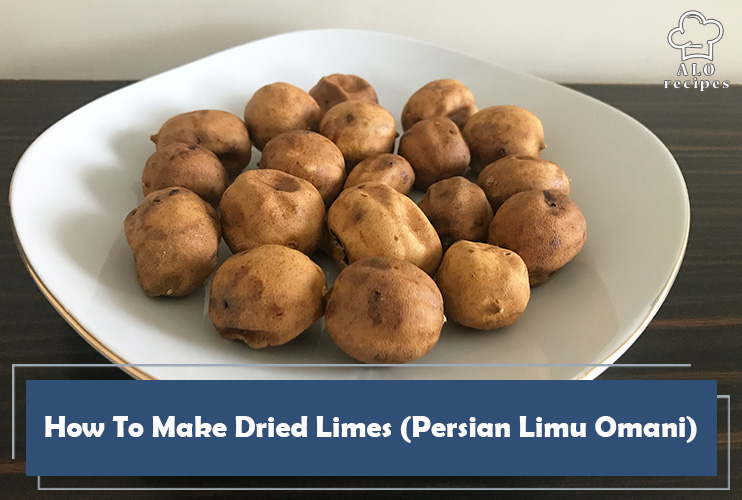

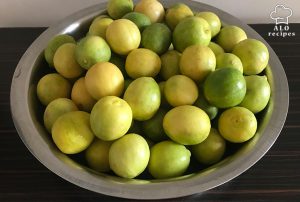

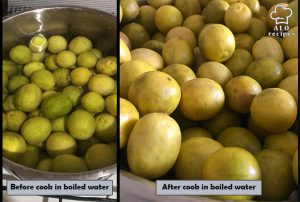
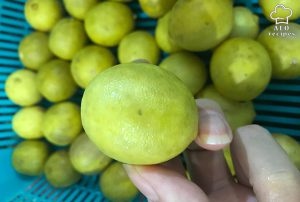
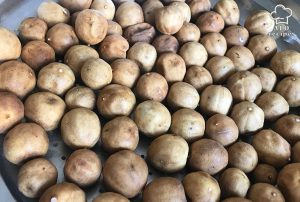
Thank you for this recipe. I was introduced to Limu Omani during the Covid19 pandemic when I was experimenting with different cuisines from around the world. I used to get them from an Iranian importer but have moved to another country so haven’t been able to find them here yet and am excited to make my own!
How long would it take to make them in a food dehydrator- a few days? And at what temperature?
Thank you!
Hello my friend, thank’s for your kind comment. I have never used a dehydrator to make Omani limes. But as I said in the article, there are different ways to dry lemons and the method you have chosen seems like a good way. Just pay attention to the signs of evaporation of lemon juice and change of color of lemons. good luck.